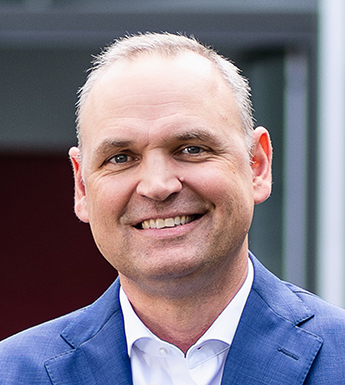With msg advisors, you design the entire path of a DiGA - from initial idea to development to approval of the medical device and its scaling on the market. Our “DiGA Journey” shows you how this can look in everyday practice and which hurdles and key factors you should be aware of in a regulated environment.
From the idea to implementation:
Milestones on the way to the
Digitale Gesundheitsanwendung (DiGA) (Digital Healthcare Application)
To be adhered to in all phases: Fulfillment of regulatory & compliance
New Digital Tools in the Preventive Healthcare Ecosystem
Smart phones accompany us as first responders. They are always ready to help in matters of healthcare with increasingly precise information. Whether as an app that confirms a suspected infection, that automatically sends blood sugar levels to the GP or that monitors sleep apnea. With the new possibility of registering a DiGA in Germany, there is now an attractive option to make such services available to all 73 million persons with statutory health insurance.
DiGAs are primarily aimed at insured persons that want to work with their physician in outpatient care and discharge management to support the prevention and treatment of a disease. For that to happen, suppliers have to overcome several hurdles. Often hard-pressed for time, as competitors are testing comparable applications and may even already have a clear business model in mind. A fictitious case study in msg advisors’ “DiGA Journey” shows how to successfully introduce a new application into the preventive healthcare ecosystem.
DiGA or Information App? The key differences at a glance.
-
Digital Healthcare Application
- Comprises a symptom diary, weather data, hypothermia warnings.
- Promotes preventive behavior and provides information on treatment techniques.
- Reminds users to take medication and suggests dosages.
-
Information App /
Wellness App- Comprises a symptom diary, weather data, hypothermia warnings.
- Does not provide information on further measures.
- 1
Idea Development: Early Warning System for Infections
About 10% of the German population will have suffered from a painful experience with swimmer's ear (otitis externa) in their lives. Women somewhat more often than men. A provider of medical devices wants to expand its product portfolio with an app to reduce this key figure. Using the “OtiApp”, users should not only be able to correctly identify the first symptoms of a bacterial infection of the skin in the ear canal or the auricle at an early stage, but also receive advice on therapeutic measures. If treatment is required, the electronic patient record (ePR), which will be introduced nationwide in 2021, will enable users to provide their GP with all the information digitally. This is equally beneficial for all actors in the healthcare system - patients, GPs, outpatient clinics, health insurers. And for the supplier, a potentially lucrative market for the sale of suitable medical devices.
But what does this kind of app actually look like? What is technically required? What is the business model behind this idea? Three aspects are decisive in this phase to establish a solid foundation for the later implementation of the idea: Creating a prototype, conducting a feasibility study and drafting the perfect project design.
In our case study, the decision has already been made to develop an app. Now the first step is to design a prototype of the “OtiApp”. The focus here is on answering the following questions, among others:
- Which user and/or patient requirements should the app fulfill? Evaluation and prioritization of unmet need from a functional, emotional and social perspective.
- For example, are there frequently occurring symptoms in the course of an ear infection - and what specifically characterizes them?
- Which “user stories” can be outlined based on this? What are the most important use cases that would have to be covered by the app and what do they look like – in broad terms?
An iterative approach, ideally carried out with a creative team (e.g., design agency), is recommended during the prototyping phase. This gets you from a rough draft of the idea to a working and presentable prototype. Advantages: The prototype is visualized at an early stage, which means that important issues regarding functionality arise and can be solved in good time.
Co-creation or co-development is another very important component, which can contribute significantly to the success of the project and its practicability. Here, the prototype is developed with patients and physicians and a foundation is laid for long-term cooperation. To further validate the results of this phase, social media monitoring can also be beneficial. For instance, by evaluating how ear infections are discussed in social networks and which aspects of this are not yet or insufficiently documented in clinical studies, for example.
At this point, the prototype should also be initially evaluated with regard to data protection, compliance and classification as a medical device. The team should now also have a rough idea of what a possible benefit assessment could look like in terms of “positive healthcare effects” After all, this is what ultimately determines permanent approval as a billable DiGA. And, of course, an acceptable option would be to implement this simply as are a “wellness app”, which is then not a medical device and therefore not a DiGA. However, we would then be in the realm of a purely informational app.
1. Milestone
Creating a solid foundation for the implementation of the DiGA idea.
Sprint to a Market-Ready DiGA with msg advisors
We accompany you from the idea to the implementation of your digital medical device – be it a DiGA or a pure wellness app. Our team of experts supports you in all phases of the process and advises you on alternative options for including your medical device in the standard care system.
Proof of Efficiency: The “OtiApp” Pilot
Whereas previously the focus was only on an outline of the feasibility, the prospects of success and the resources required for the implementation of the “OtiApp”, our attention now turns to the in-depth validation of these initial assumptions. Implementing the app as a pilot is recommended at this point to further minimize the risks of this investment. This allows the previously created prototype to be “gently” transformed into a fully implemented "minimum viable product" (MVP).
This pilot should be equipped with the main core functions so that it can be tested in the real world: This way, field tests can be conducted over a short period of time with a group of physicians and patients to gain empirical data on user-friendliness and practicability. If possible, the pilot should be used to directly gather knowledge about possible positive care effects – which can ultimately help in getting approval of the DiGA.
Based on these and other findings from a successful "pilot", the development of the OtiApp can continue and preparations can be made for placing it on the market. In each development step, the corresponding regulatory requirements (data protection, QM system, etc.) should be complied with from the outset. If this is neglected, significant additional work can be expected during the approval process. As soon as the app has been fully developed and all specified requirements have been met, it can in principle be registered as a DiGA. According to the Federal Institute for Drugs and Medical Devices (Bundesinstitut für Arzneimittel und Medizinprodukte (BfArM)):
A DiGA is a CE-marked medical device that has the following properties:
- Medical device of the risk class I or IIa according to the Medical Device Regulation (MDR) or the transitional regulation Medical Device Directive (MDD).
- The main function of the DiGA is based on digital technologies.
- The medical purpose is mainly achieved by way of its digital function.
- The DiGA supports the recognition, monitoring, treatment or alleviation of diseases or the recognition, treatment, alleviation or compensation of injuries or disabilities.
- The DiGA is used by the patient alone or by patient and healthcare provider together.
If positive effects on care can be demonstrated directly, permanent inclusion in the DiGA registry can take place right away. If the corresponding clinical studies are still pending, at least a provisional inclusion in the DiGA register for 12 months is possible. In case of questions regarding approval or product design, you can contact the BfArM at any time.
The OtiApp has now been classified as a medical device and provisionally included in the DiGA register. The proof of positive care effects is still missing. With the inclusion in the register, the app can now be prescribed by physicians and will then also be reimbursed by the statutory health insurers. The app publisher now has 12 months to confirm the clinical benefit. Otherwise, the device will be delisted from the DiGA register and thus the possibility of reimbursement by the statutory health insurers will no longer apply.
Unlike traditional medical devices, for which only basic compliance must be demonstrated, proof of positive effects on care is required for the DiGA. How exactly this is to be done and by what means has not yet been clearly defined. What is clear is that all data must be valid, comprehensible and collected according to scientific standards. The study's design itself can be freely selected and also depends on the type of DiGA. A retrospective study, which is explicitly mentioned in the DiGA guidelines, might be an option, for example. Merely citing studies that have already been conducted is never sufficient. In particular, we consider the following questions during the study design to be useful, especially with regard to the highest possible acceptance in the professional community when it comes to subsequent publication and marketing:
- Which results must the study produce to clearly demonstrate the effectiveness of the DiGA?
- Which patient target group can be considered for the study?
- Which experts (KOLs - key opinion leaders) could be attracted for the study and/or clinics could be of interest?
- How will the collected data be evaluated?
- Which data can be used for comparison purposes?
How can data integrity be ensured at all times?
2. Milestone
Gathering experience of user friendliness and practicability with a DiGA pilot.
3. Milestone
Successfully completing the DiGA fast-track procedure.
Implementation & Use: Focus on Effectiveness
The provider of our case study “OtiApp” has done everything right in the fast-track procedure: The DiGA receives approval from the BfArM for the German market. Before moving on to the next phase regarding deployment strategies for the app use in other countries, the following success-critical points should be taken into account to promote market uptake:
- Market entry strategy: In Germany, the app is prescribed by physicians. How do you get support here? Directly via the physician or the patient?
- Market monitoring: This concerns, among other things, proof of the positive effect on care according to the DiGAV (Digital Healthcare Application Act). This can be implemented with the help of the standardized PICO process, for example. The evaluation of feedback from patients, physicians and health insurers is valuable for making adjustments both to the app’s functions and to the risk analysis.
- System and product audits and data analytics support the usability of the app as well as information security and the issue of data protection.
4. Milestone
Driving establishment on the market.
Expansion: Opening Up Further Fields of Application
Providers of a DiGA such as “OtiApp” should not only focus their attention on other markets outside Germany. Equally exciting is the further development of the field of application to prevent other infectious diseases. The know-how gained in the development and approval of the DiGA can also be used for other digital applications, for example for other ENT diseases.
The key to success for such a “scale-up” is to set up the app and the infrastructure technologically in such a way that scaling is possible - ideally, a modular architecture should be used. If the processes and organization are streamlined, the lessons learned from one project can be easily transferred to other use cases. An iterative and/or agile approach may also be beneficial here.
5. Milestone
Achieving a scale-up into new markets.
Learn more.

Thomas Praska
We are looking forward to hearing from you!

Joachim Stengel
We are looking forward to hearing from you!




